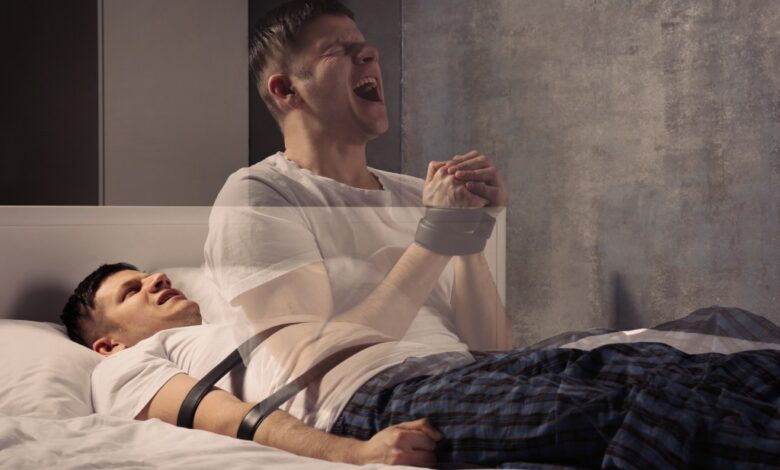Demon or sleep disorder? Depends on who you ask

It’s the stuff of nightmares.
You wake up, and you can’t move your body. A shadowy figure looms over you, but it feels too real to be a dream. If you’ve experienced this, you might have had a sleep paralysis hallucination.
The hallucinations typically happen when someone passes between the state of being asleep in the rapid-eye movement stage and being awake, according to the Sleep Foundation.
The body is temporarily paralyzed during these hallucinations because the body doesn’t move when a person is in REM. The brief lack of muscle control is called atonia.
“In effect, the atonia and mental imagery of REM sleep seems to persist even into a state of being aware and awake,” Sleep Foundation author Eric Suni explained.
The hallucinations experienced during sleep paralysis are either hypnagogic hallucinations, which occur when a person is falling asleep, or hypnopompic hallucinations, which happen when waking up.
Sleep paralysis is considered parasomnia, defined as an abnormal sleep behavior.
There have been scientific studies documenting the sleep condition as well as art and writings about the hallucinations, which were sometimes interpreted as ghost visitations.
A 2019 study of 185 people found that as many as 58% of people sensed a “nonhuman” presence in the room with them and 22% of people saw what they thought was a person in their room.
Types of sleep paralysis ‘demons’
People with sleep paralysis have shared so many common experiences that the “beings” they’ve encountered have been represented similarly in art and literature.
“The content of the hallucinations experienced during an episode of sleep paralysis can vary enormously, but certain themes tend to occur more often than others. One of these is that of demons, as beautifully illustrated in a famous painting, ‘The Nightmare‘ by Henry Fuseli, dating back to 1781,” Professor Chris French, head of the Anomalistic Psychology Research Unit at Goldsmiths, University of London told the Telegraph.
“In Europe in the Middle Ages, sleep paralysis episodes were commonly interpreted as attacks by sex-crazed demons who would have their wicked way with their paralyzed, helpless victims. The male demons were referred to as incubi, and the females were known as succubi,” he added.

The “incubus” hallucinations are one common type and “tend to co-occur with intruder hallucinations, are marked by sensations of pressure on the chest, along with feelings of suffocation or choking,” Betul Rauf, a Ph.D. candidate in Sleep Research at Goldsmiths, University of London, told the Telegraph.
There are also two other types of hallucinations reported which include intruder hallucinations, or the frightening feeling that someone has entered your room, or vestibular-motor hallucinations. The V-M hallucinations are characterized by a feeling that the body is floating or flying and can sometimes be accompanied by feelings of bliss.
Unlike nightmares which occur when the body is asleep, sleep paralysis happens when the body is awake.
“Sleep paralysis demons manifest when the body is temporarily immobilized while the mind is awake, whereas nightmares unfold within a dream narrative and lack the physical sensations of paralysis,” Rauf said.
In the event you have a hallucination, sleep experts recommend telling yourself they aren’t real and doing small things to wake your body back up like wiggling your fingers and toes.
Cause and prevention
Somewhere between 25% to 50% of Americans have had sleep paralysis at least once in their lives, according to WebMD.
Studies have found a link between people with stress, anxiety, post-traumatic stress disorder, substance abuse and sleep paralysis. Sleep paralysis could also be a symptom of narcolepsy, a sleep disorder that causes people to fall asleep involuntarily.
Other research suggests sleep paralysis could be caused by jet lag or other things that disrupt sleep schedules.
To prevent sleep paralysis, people can develop a bedtime routine and get at least seven hours of sleep a night. People report sleep paralysis more when they are sleeping on their backs, so they can sleep on their side to keep it at bay.
Anxious sleepers may also want to consult their physician about taking antidepressants or anti-anxiety medications to manage emotional symptoms that could be contributing to the sleep disorder.




